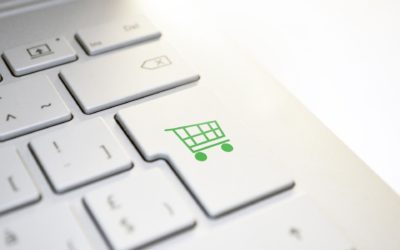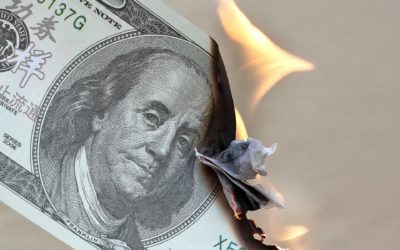The importance of cash as a central means of payment is steadily declining and our society is slowly moving in the direction of a cashless economy. But card payments are also increasingly being replaced by new forms of payment. Mobile payments – e.g., with smartphones – and online payments are now widespread. An important factor in this phenomenon is certainly the growing importance of online retailing. Many purchases are no longer made in a physical store, but online, and often there is no option at all to pay for these purchases with cash. Time and again, however, we hear voices claiming that people spend more money when paying by card than when paying by cash. This raises the question of whether paying with cash actually has an impact on our purchasing behavior. This post will look at the psychological characteristics of the various forms of payment, how the choice of payment method affects our everyday lives, and whether it makes sense for society to strive for a cashless economy.
Disclaimer
All content and statements within the blog posts are researched to the best of our knowledge and belief and, if possible, presented in an unbiased manner. If sources are used, they are indicated. Nevertheless, we explicitly point out that the content should not be understood as facts, but only as a suggestion and thought-provoking ideas for the own research of the readers. We assume no liability for the accuracy and/or completeness of the content presented.
When analyzing payments, it must be taken into account that individuals not only accept monetary costs when making a purchase, but also psychological costs. This concept is referred to as “pain of payment” and the extent of this is largely determined by how tangible a payment is. When differentiating between various payment options, the degree of transparency is a key factor. Whereas cash payments are extremely transparent, card payments, for example, have a much lower degree of transparency. When a purchase is made using cash, the payment is made immediately and the process is largely transparent to outsiders, so the payment process presents a greater barrier here than with other payment methods. Credit cards, for example, separate the time of purchase from the time when the outflow of one’s financial resources becomes visible (e.g., at the end of the month). Whenever a purchase decision is made, individuals thus have to weigh the advantages and disadvantages of the purchase, and when the “pain of payment” is high, the costs to be considered are higher (disadvantage). A transparent payment method can thus have a negative impact on the willingness to buy, whereas less tangible payment methods are more likely to be seen as a kind of ” monopoly money” and are more easily spent.¹ Prelec & Simester (2001) empirically investigated this phenomenon and their studies confirmed that willingness to pay is indeed higher for card payments than for cash payments. When paying with a credit card, subjects are willing to pay a significant premium – without being aware of it. The authors suggest that this observation results from the different underlying conditions. It could be that individuals paying with cash base their willingness to pay on the amount of money they carry, whereas when paying with a credit card, they use the credit line as an anchor point. However, the results of the studies also show that a significant premium that cannot be explained by the convenience of card payment alone is present, especially when the actual value of a product is unknown.²
These findings are not only interesting in the context of science, but also have implications for our everyday lives. Thomas et al. (2011) confirmed in their work that people who pay by card are more likely to purchase and consume unhealthy foods than people who pay by cash. The level of psychological costs associated with a purchase and payment depend on whether a decision is made impulsively or deliberately, so a higher “pain of payment” may curb impulsive purchasing behavior. Because spontaneous cravings for unhealthy foods often lead to impulsive purchase intentions, people who pay by card are more prone to act on those cravings.³ However, not only part of the problem of inappropriate eating can be explained by our payment behavior. It is possible that the change in the way we pay also offers an approach to highlighting why we produce so much waste. When individuals make a painful decision, they place a higher value on the outcome resulting from that decision. If, prior to the decision, there were several alternatives to which the deciding individual was indifferent, a painful decision leads individuals to feel more attached to their chosen alternative afterwards. Moreover, the painful decision increases the attractiveness of the chosen alternative and decreases the attractiveness of the unchosen ones. Thus, a change in payment behavior that leads to a reduction in “pain of payment” in the purchase process results in less attachment to the products purchased and their manufacturers. If individuals pay by card more frequently, this may lead not only to overspending, but also to generating more waste as people more easily and quickly part with products to which they do not feel committed.⁴
When considering the above-mentioned consequences of card payments for our society, one has to ask the legitimate question of whether a “cashless economy” is even desirable. At the same time, however, it should also be questioned whether the continuously increasing number of cashless payments has not also meant that the concepts described above no longer have such a significant impact on our lives as they did at the time of their development. One could argue that neobanks in particular have made a significant contribution to making the way we realize payments more manageable. The increasing prevalence of online banking and mobile banking means that even with card payments, the outflow of one’s financial resources is immediately visible, so at the very least the time delineation between purchase and visibility of payment should no longer be used as a strong argument. Instead of opposing technological progress and restricting the rising prevalence of card payments to protect consumers, policymakers could create frameworks that support individuals in making more conscious financial decisions. For younger generations in particular, cash is not the central means of payment as they have grown up in the era of online banking and mobile banking. One conceivable approach would thus be for these generations to be made aware of the potential pitfalls of cashless payments as part of financial education and to receive effective support in learning how to budget their financial resources wisely and manage them responsibly.
It is indeed true that the payment method influences individual purchasing behavior, although it is unclear exactly how strong the influence is in practice. This influence essentially results from the psychological costs – also referred to as the “pain of payment” – associated with the payment process. The more tangible a payment, the higher the associated psychological costs. The continuously increasing adoption of cashless transactions reduces these costs and may lead individuals to make poorer purchasing decisions. Problems affecting society as a whole, such as poor nutrition and increasing waste, can also be explained at least partially with the help of this phenomenon. Since limiting technological progress in the financial sector seems rather unrealistic, policy makers should help ensure that the population is educated about the potential dangers of card payments and given sufficient support in terms of financial literacy.
¹ Raghubir, P., & Srivastava, J. (2008). Monopoly money: The effect of payment coupling and form on spending behavior. Journal of experimental psychology: Applied, 14(3), 213-225.
https://doi.org/10.1037/1076-898X.14.3.213.
² Prelec, D., & Simester, D. (2001). Always leave home without it: A further investigation of the credit-card effect on willingness to pay. Marketing letters, 12(1), 5-12.
https://doi.org/10.1023/A:1008196717017.
³ Thomas, M., Desai, K. K., & Seenivasan, S. (2011). How credit card payments increase unhealthy food purchases: Visceral regulation of vices. Journal of Consumer Research, 38(1), 126-139.
https://doi.org/10.1086/657331.
⁴ Shah, A. M., Eisenkraft, N., Bettman, J. R., & Chartrand, T. L. (2016). “Paper or plastic?”: How we pay influences post-transaction connection. Journal of Consumer Research, 42(5), 688-708.
https://doi.org/10.1093/jcr/ucv056.



